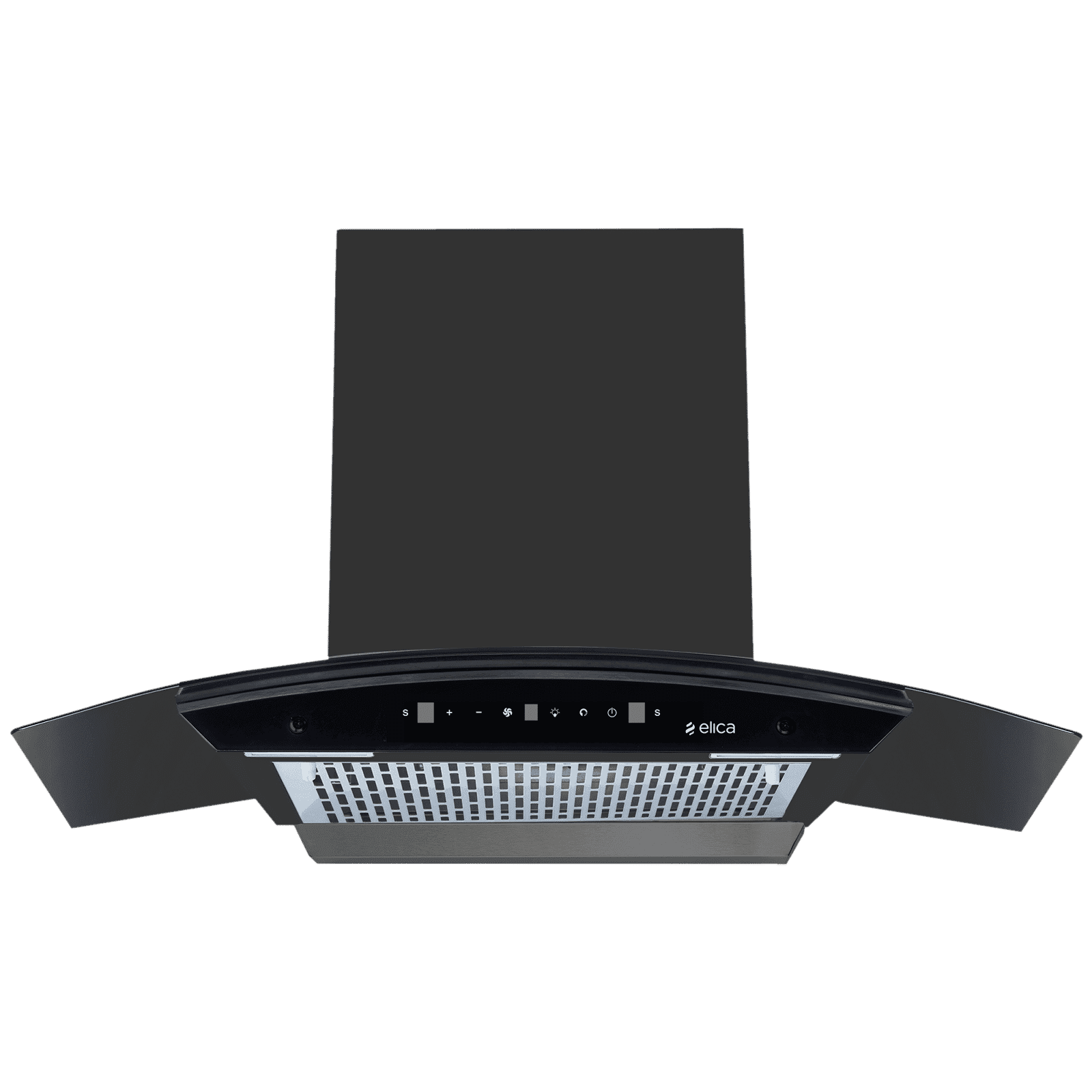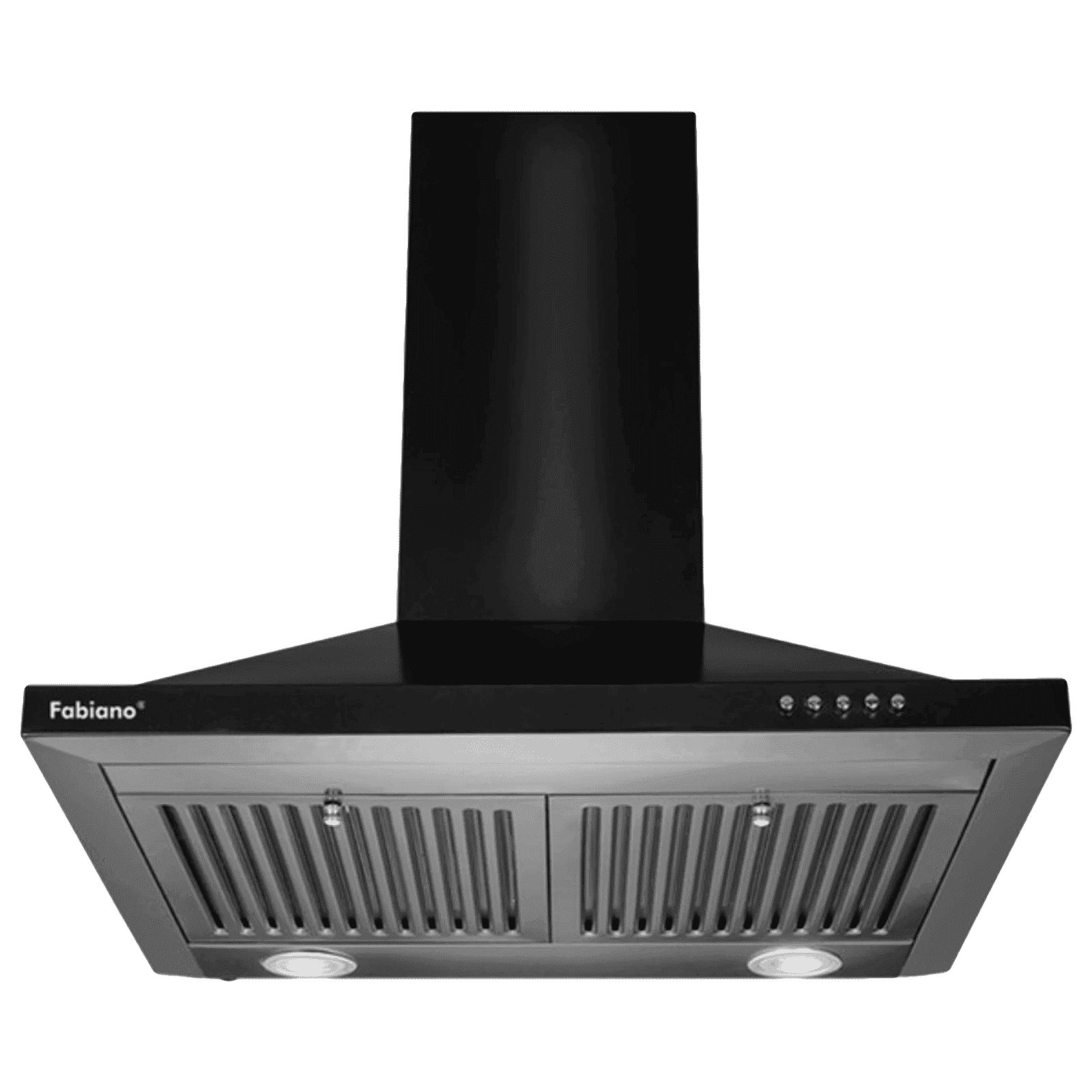
Home Appliances
•05 min read

Buy elica ISMART SPOT FL HAC 75 LTW NERO 75cm 2300m3/hr Ducted Wall Mounted Chimney with Brushless DC Motor (Black) online at best prices from Croma. Check product details, reviews & more. Shop now!
Imagine walking into your kitchen and being greeted by clean, fresh air despite the sizzling pans and aromatic spices. The right chimney setup can make this dream a reality. In today’s blog, we will explore the differences between ducted and ductless chimneys, helping you choose the ideal option for your kitchen. By the end, you'll clearly understand the installation requirements, maintenance needs, and design options of each setup, ensuring you invest in a system that not only enhances your cooking experience but also compliments your kitchen’s layout.
When we talk about kitchen chimneys, we refer to appliances designed to remove unwanted smoke, odours, and grease from your kitchen through efficient venting and air filtration. A suitable chimney setup is crucial for maintaining a healthy cooking environment. There are two primary variations to choose from: ducted and ductless chimneys. Ducted chimneys work by expelling air externally through chimney venting options, while ductless chimneys employ internal filters to cleanse and recycle the air in your kitchen.
Ducted chimneys operate by utilising an external venting system that channels the smoke, heat, and odours out of your kitchen. Ideal for larger kitchens or homes with ready access to an outdoor vent, these systems provide a robust solution that effectively eliminates pollutants from the air. If you are planning a major kitchen upgrade, consider the advantages of a ducted system as part of your overall chimney installation strategy.
The primary benefit of a ducted chimney is superior air filtration and odour removal. Because it directs all unwanted particles outside, it significantly reduces the likelihood of grease buildup and ensures a cleaner cooking space. Additionally, their installation typically results in lower maintenance compared to ductless systems, reducing long-term upkeep expenses while offering excellent performance for heavy cooking sessions.
Installing a ducted chimney does come with some structural considerations, particularly regarding the placement of ducts and external vents. There might be increased initial costs due to professional installation needs and chimney venting options. While professionals can help guide you through the process, the robust performance of these systems makes them a worthwhile investment for kitchens that frequently host high-output cooking.
Ductless chimneys use a filter-based system to clean the air by recirculating it back after filtering out grease and particulate matter. This method makes them ideal for apartments or kitchens where external venting isn’t an option. They offer flexibility in placement and are especially popular among those with space constraints or who prefer simpler installations.

Buy elica WDFL 900 BLDC HAC LTW MS NERO 90cm 1500m3/hr Ducted Auto Clean Wall Mounted Chimney with Motion Sensor Control (Black) online at best prices from Croma. Check product details, reviews & more. Shop now!
One of the most notable benefits of ductless systems is the ease of installation. Since they do not require modifications to your home’s structure, you can often set them up with minimal hassle, saving both time and installation costs. Moreover, their design options allow them to blend seamlessly into various kitchen décors, making them a versatile addition to modern homes. The overall chimney setup is easier and simpler to integrate even without extensive modifications.
Regular upkeep is essential for ductless systems. It is important to clean or replace the filters frequently to ensure optimal performance. While this might incur additional long-term expenses, maintaining the filters is key to preserving the air quality in your kitchen. Keeping up with the chimney cleaning process and following routine chimney maintenance tips will help you extend the life of your system and keep your environment safe.
Did You Know?
Ducted chimneys are often preferred for homes with heavy-duty cooking needs because they can expel heat, smoke, and grease more effectively than ductless chimneys. However, if your kitchen lacks external venting options, ductless chimneys can still provide a reliable solution with proper maintenance.
When you compare the two categories, ducted systems often excel in air filtration effectiveness, especially in removing strong odours and reducing grease buildup. They are particularly well-suited for kitchens that involve heavy cooking. Conversely, ductless systems can effectively manage light or moderate cooking demands, making them a suitable choice for smaller kitchens or urban apartments. This careful balance between performance and efficiency is crucial when considering your chimney setup.
The cost breakdown varies for each system. Ducted chimneys usually entail higher installation expenses due to the requirements of external venting, while ductless systems may offer savings on installation by avoiding major structural alterations. It is essential to factor in not just the upfront costs, but also the maintenance expenses over time, as outlined in various chimney buying tips. This makes it imperative to evaluate your budget and long-term maintenance costs before settling on a system.
The aesthetics of your kitchen often play a vital role in deciding on a chimney setup. Ductless chimneys offer greater flexibility in terms of placement, which means you can integrate them into diverse kitchen designs without worrying about ductwork constraints. On the other hand, ducted chimneys require precise placement due to their reliance on external ducts, limiting design options but providing a robust performance advantage. This balance between form and function means you have to weigh the best chimney designs against practical installation aspects.

Buy Fabiano Cosmo 60cm 1000m3/hr Ducted Wall Mounted Chimney with Dual Baffle Filters (Black) online at best prices from Croma. Check product details, reviews & more. Shop now!
Your cooking habits, kitchen size, and physical layout significantly influence which chimney setup will best serve your needs. For frequent, heavy cooking, a ducted system might be the ideal solution, offering robust ventilation and reduced maintenance hassle. However, if you reside in an apartment or have limited structural options for venting, a ductless system may be more practical. Other factors to assess include energy efficiency, noise levels, and overall long-term support, all essential considerations covered in our comprehensive Kitchen Chimney guide.
Before making a purchase, consulting a professional can provide valuable insights into installation requirements and design ideas. Consider reviewing detailed information available on chimney installation cost, and keep an eye on community advice regarding various types of kitchen chimneys. With expert guidance, you can better understand the trade-offs between performance, initial investment, and future maintenance needs. Ensuring you get a system that pairs well with your lifestyle can enhance your cooking environment while making the most of valuable NeuCoins rewards when shopping with Tata Neu.
The cost to install a chimney varies depending on the type—ducted systems generally incur higher costs due to additional venting requirements.
While many regions allow self-installation of chimney liners, it is recommended to hire a professional to meet safety standards and local building codes.
Ducted chimneys expel unwanted air outdoors, while ductless systems utilise filters to recycle air back into your kitchen. Each option has its own set of advantages tailored to different cooking environments.
For ducted chimneys, cleaning every 6 months is usually sufficient, whereas ductless systems require filter cleaning or replacement every 3-6 months based on usage.
Choosing between ducted and ductless chimneys ultimately depends on your kitchen’s layout, cooking habits, and budget. While ducted systems offer exceptional performance with minimal maintenance, ductless systems provide flexibility and simpler installation. By weighing the costs, design considerations, and hygiene benefits of each option, you can make an informed decision that enhances your home environment. Explore more detailed guides and enjoy the added benefits of NeuCoins rewards when you shop smartly with Tata Neu. With reliable after-sales support and the convenience of Express Delivery on orders placed before 6 PM, achieving the perfect chimney setup for your kitchen has never been easier.